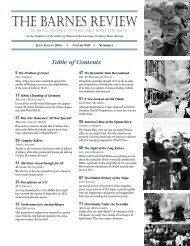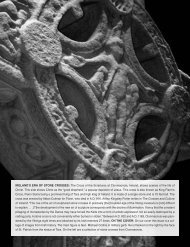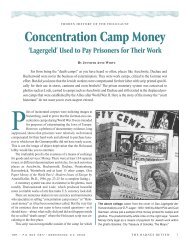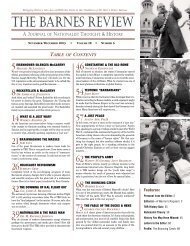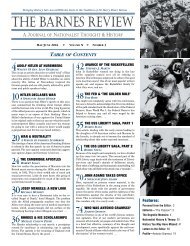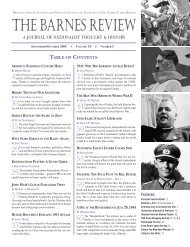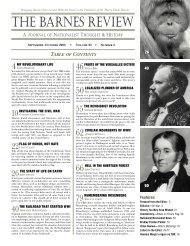You also want an ePaper? Increase the reach of your titles
YUMPU automatically turns print PDFs into web optimized ePapers that Google loves.
Views of America<br />
ALL FORMS OF ECONOMIC DEVELOPMENT, it seems, carry their negative<br />
side. <strong>The</strong> nation’s need for railroads led the livelihoods of millions<br />
to become dependent upon them. Railroad companies quickly become<br />
the mega-corporations of their time. <strong>The</strong>ir sheer size and vital role in<br />
intra-American trade provided the railroad companies with a sense of<br />
invincibility. Poor conditions and pay for workers, as well as violent<br />
responses to strikers, helped spur the original American populist<br />
movement. In this 1873 cartoon at right, the “railroading” of the<br />
American public over high travel and trade prices is given new meaning.<br />
<strong>The</strong> man with the pitchfork represents the populist Grange movement<br />
of the mid to late 19th century warning the American public<br />
about the “bribery and extortion” of railroads.<br />
THERE CAN BE NO DOUBT THAT RAILWAY TECHNOLOGY facilitated<br />
the development of a strong sense of national unity among<br />
Americans, even Americans who were now becoming geographically<br />
quite distant from one another. <strong>The</strong> existence of a technology that<br />
could ferry people and goods over long distances quickly also served<br />
to diminish regional differences. At left, a poster issued by the New<br />
York and Boston Railroad tells prospective passengers that only<br />
this railway can take them out west while also giving them a view<br />
of Niagara Falls.<br />
AS THE UNITED STATES EXPANDED in the 19th century, and the economy began to become more diversified, new means for both trading<br />
and travel quickly became necessary. Roads, previous to the development of railway technology, generally speaking, were rough and often<br />
haphazard, and certainly did not provide for the convenience demanded for a regular trading pattern between the developing west and<br />
the established east. Here, three early train cars are depicted. <strong>The</strong> locomotive, Tom Thumb, pulls two clearly upper-class cars.



